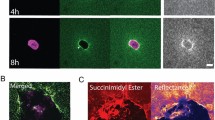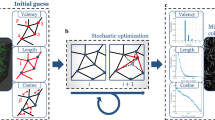Abstract
There is a pressing need for a predictive tool capable of revealing a holistic understanding of fundamental elements in the normal and pathological cell physiology of organoids in order to decipher the mechanoresponse of cells. Therefore, the integration of a systems bioengineering approach into a validated mathematical model is necessary to develop a new simulation tool. This tool can only be innovative by combining biomaterials science with computational biology. Systems-level and multi-scale experimental data are incorporated into a single framework, thus representing both single cells and collective cell behaviour. Such a computational platform needs to be validated in order to discover key mechano-biological factors associated with cell–cell and cell–niche interactions.


Similar content being viewed by others
References
Cukierman E, Pankov R, Yamada KM. Cell interactions with three-dimensional matrices. Curr Opin Cell Biol. 2002;14:633–9.
Hutmacher DW. Scaffolds in tissue engineering bone and cartilage. Biomaterials. 2000;21:2529–43.
Loessner D, Stok KS, Lutolf MP, Hutmacher DW, Clements JA, Rizzi SC. Bioengineered 3D platform to explore cell-ECM interactions and drug resistance of epithelial ovarian cancer cells. Biomaterials. 2010;31:8494–506.
Byrne HM. Dissecting cancer through mathematics: from the cell to the animal model. Nat Rev Cancer. 2010;10:221–30.
Loessner D, Little JP, Pettet GJ, Hutmacher DW. A multiscale road map of cancer spheroids—incorporating experimental and mathematical modelling to understand cancer progression. J Cell Sci. 2013;126:2761–71.
Werner HM, Mills GB, Ram PT. Cancer systems biology: a peek into the future of patient care? Nat Rev Clin Oncol. 2014;11:167–76.
Gilbert PM, Blau HM. Engineering a stem cell house into a home. Stem Cell Res Ther. 2011;2:3.
Loessner D, Holzapfel BM, Clements JA. Engineered microenvironments provide new insights into ovarian and prostate cancer progression and drug responses. Adv Drug Deliv Rev. 2014;79–80:193–213.
Author information
Authors and Affiliations
Corresponding authors
Additional information
Dietmar W. Hutmacher and J. Paige Little are joint first authors.
Rights and permissions
About this article
Cite this article
Hutmacher, D.W., Little, J.P., Pettet, G.J. et al. Biomaterial science meets computational biology. J Mater Sci: Mater Med 26, 185 (2015). https://doi.org/10.1007/s10856-015-5518-z
Received:
Accepted:
Published:
DOI: https://doi.org/10.1007/s10856-015-5518-z




